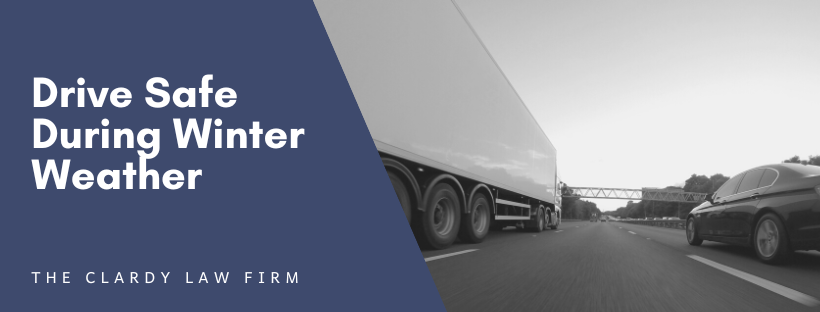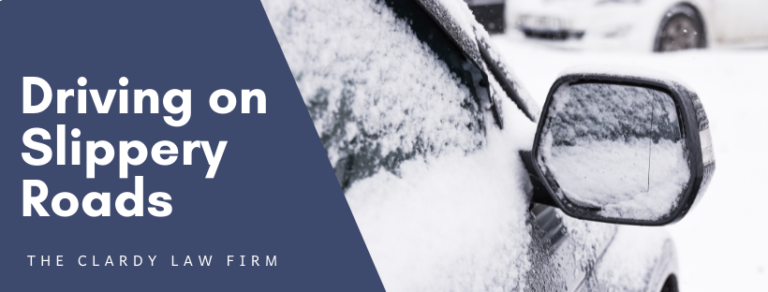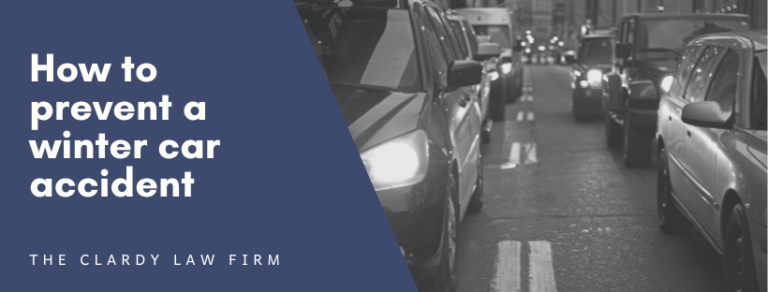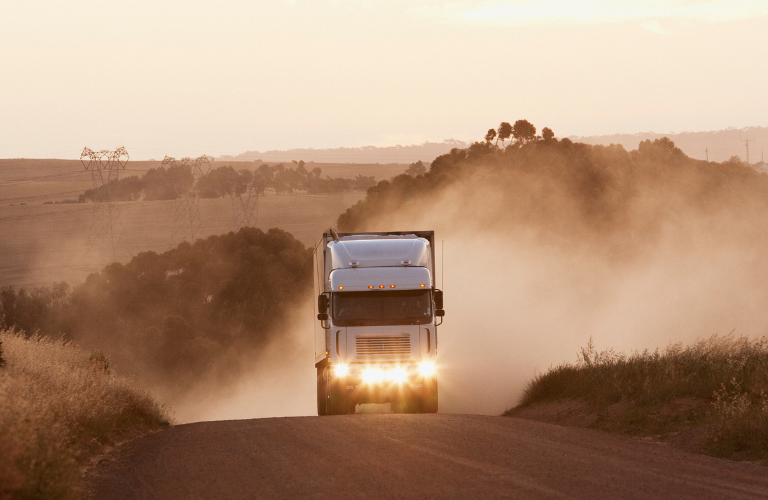Winter driving can be hazardous and scary even in places like South Carolina, where we seldom get heavy snowfall. Preparing ahead of time can make your trips out on the road safer and help you prepare for an emergency should the worst happen. Here is the list of winter driving safety tips, based on the three P’s of winter driving, on what you can do to prevent an auto accident and motor vehicle injuries due to winter storms.
The Three P’s To Drive Safe During Winter Weather
The “Three P’s of Winter Driving” was designed by The National Highway Traffic Safety Administration (NHTSA) and OSHA to help get drivers ready for winter road conditions.
The three P’s stand for PREPARE for the trip, PROTECT yourself and PREVENT crashes on the road.
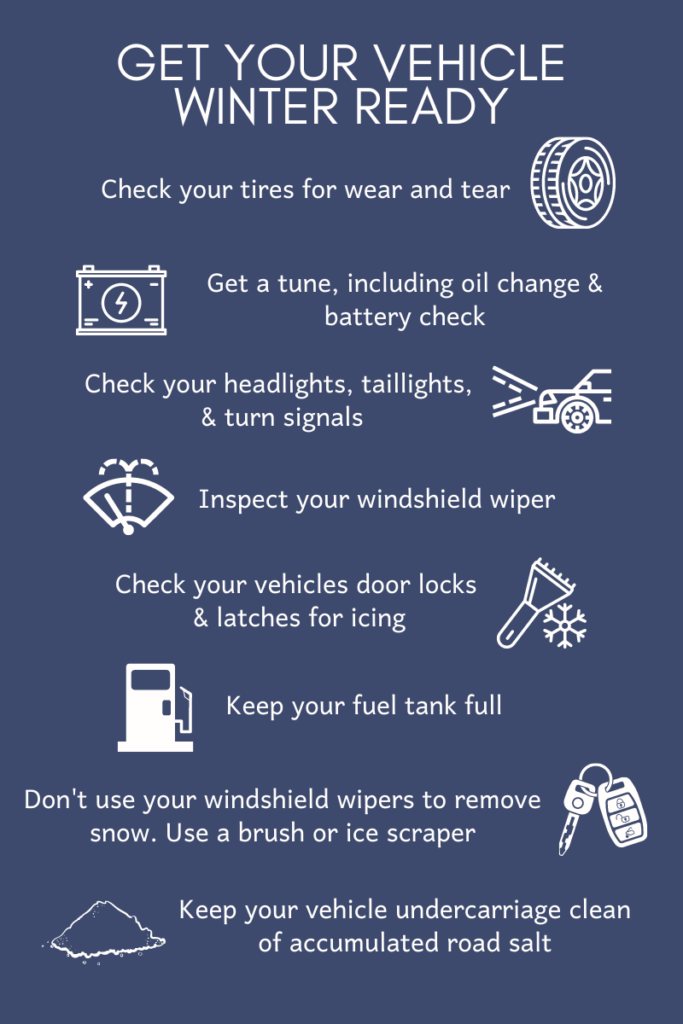
1. PREPARE
Get Your Vehicle Ready
- Check your tires for wear and tear. Tread will have a major impact on how well you stay secure on icy or slippery roads
- Get a tune-up, including oil-change and battery check. Check your vehicle owner’s manual to ensure your engine has the right grade of oil for this time of year. Most newer vehicles use multi-weight oil that is suitable for a wide range of temperatures, but some oil can thicken when it gets cold. This makes it harder for your vehicle’s engine to turn over which could potentially leave you stranded somewhere.
- Check your headlights, taillights, and turn signals. Replace foggy, hazy, or damaged lens covers to improve your visibility and ensure other drives can clearly see your vehicle in whiteout conditions.
- Inspect your windshield wipers. If your wipers leave behind streaks on your windshield or if the blade rubber appears to be cracking or stiff, replace them with a new set from your local auto store. Make sure to put a no-freeze fluid in your washer reservoir, as well, to prevent your wiper fluid from icing up.
- Don’t use your windshield wipers to remove snow from your windshield, to avoid damaging your vehicle and your wipers. Instead, use a brush or scraper to remove ice and snow.
- Keep your fuel tank full. Not only will this give you a reserve if you become stranded but water can also accumulate in your tank during lower temperatures, which can cause corrosion. There are also chemical additives that you can add to your gas tank which will absorb water from your fuel system and keep your engine running more efficiently in cold weather.
- Check your vehicle door locks and latches. Invest in a lock de-icer to keep in your home or garage to thaw and release frozen automobile locks.
- Keep your vehicle undercarriage clean of accumulated road salt to prevent rust and serious, costly structural damage.
Prep Your Emergency Travel Kit
You should always travel with an emergency kit in your vehicle at all times. If you haven’t checked your kit out in a while, now is the time to do so. Here are just a few things that you should ideally have in your emergency travel kit while driving in winter weather:
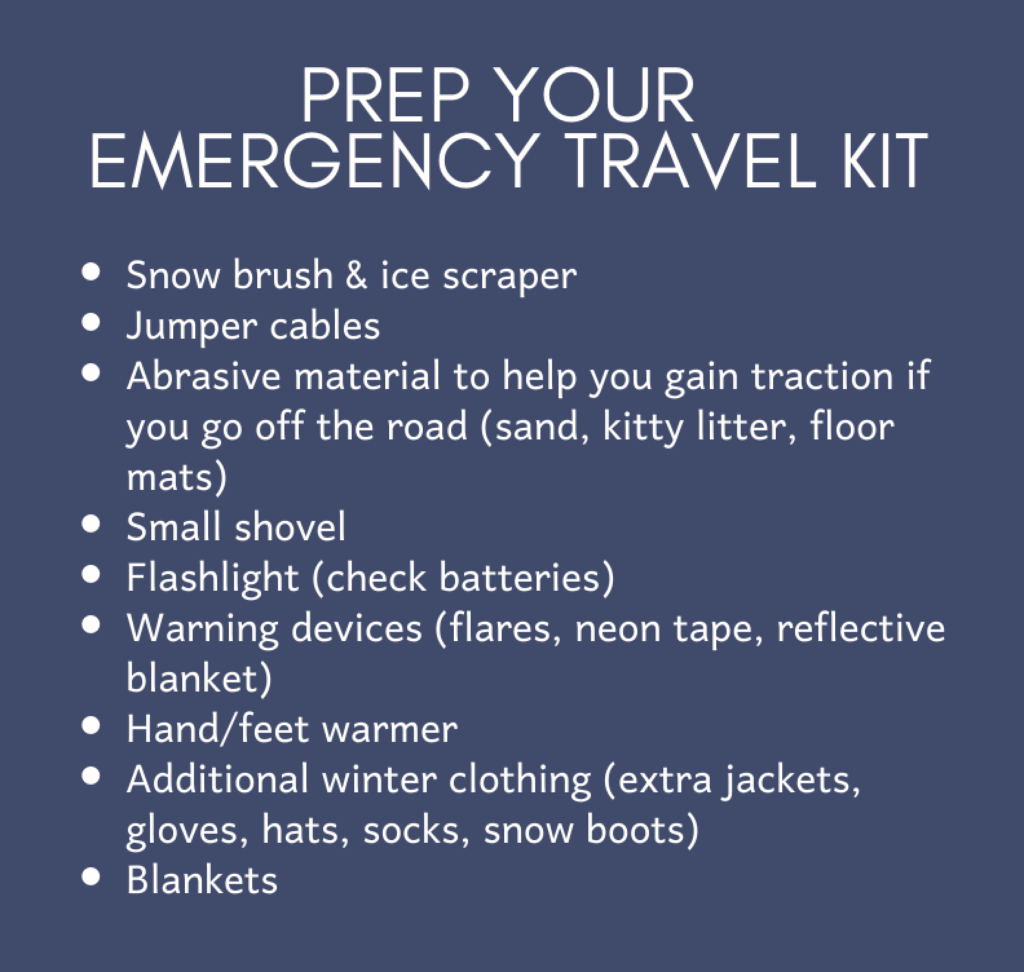
- Snow brush and ice scraper
- Jumper cables
- Abrasive material to help you gain traction if you go off the road (sand, kitty litter, even floor mats will work)
- Small shovel
- Flashlight (check batteries)
- Warning devices (roadside flares, neon tape, reflective blanket – something that will draw attention to a passing vehicle)
- Hand/feet warmers
- Additional winter clothing (extra jacket, gloves, hat, socks, snow boots)
- Blankets
For longer trips, also include non-perishable food, bottled water, and needed medication.
Know what to do if you get stopped or stalled
If you get stopped or stalled out on the road in winter conditions, stay in your car. This is especially true if you happen to find yourself in a multi-car pile-up. Your car will provide a better barrier against you and any other vehicles that could slide into you. If you find yourself stranded, put a bright marker on your antenna or just outside your windows. If you need to run your car for warmth, make sure your exhaust pipe is clear and only run it just enough to stay warm, don’t use up all your fuel!
Plan your route
When travelling in winter weather, especially long miles, make sure to plan your route ahead of time. Leave early if necessary, be familiar with your map and directions, and let others know your route and estimated arrival time. Allow yourself plenty of time to get to your destination. It’s not worth it to speed through hazardous weather conditions and risk your life or the lives of your passengers and other drivers.
Review how to drive in cold weather conditions
- Drive slowly on ice and snow
- Steer into a skid and learn how to regain control of your vehicle during a spin-out
- Know what your brakes will do based on the type of braking system in your vehicle. Stomp on anti-lock brakes, pump on non-anti-lock brakes.
- Remember that stopping distances are longer on slick or icy roads
2. PROTECT
Protection includes yourself, your passengers, and other drivers on the road.
- Make sure every passenger has their seatbelt on and that children are in the recommended type of seat or booster.
- Children younger than 12 should be seated in the back seats for their safety.
- Never put an infant’s rear-facing seat in front of an airbag!
3. PREVENT
There are a few things you can do as a responsible driver to help prevent winter car crashes.
- Remember that alcohol and drugs never mix with driving! If you’re planning to drink, find a designated sober driver to take you back home safely or use a taxi service.
- Let someone know when and where you’re going if you’re planning a long drive through more remote areas.
- Avoid driving when tired, upset, or preoccupied. Pull over and rest if you start to feel sleepy or switch driving roles with another passenger.
- Slow down according to weather and road conditions, not just posted speed limits.
- Maintain a safe distance between you and the vehicle in front.
- If a car is following behind too closely, gently pulse your brakes to indicate that you don’t intend to go faster. If they continue to ride too close, find a safe place to pull over and let them pass.
- Use caution when accelerating and braking. An all-wheel drive or 4WD vehicle will accelerate better in snow and ice but will not brake any better than a standard vehicle. Use caution and don’t accelerate too aggressively to avoid fish-tailing and unnecessarily sliding out.
These are just a few of the things you can do to drive more safely during winter. If you have any questions about winter driving tips or find yourself looking for guidance after a winter-related road accident, contact The Clardy Law Firm.

